Feng Luo
FairAgent: Democratizing Fairness-Aware Machine Learning with LLM-Powered Agents
Oct 05, 2025Abstract:Training fair and unbiased machine learning models is crucial for high-stakes applications, yet it presents significant challenges. Effective bias mitigation requires deep expertise in fairness definitions, metrics, data preprocessing, and machine learning techniques. In addition, the complex process of balancing model performance with fairness requirements while properly handling sensitive attributes makes fairness-aware model development inaccessible to many practitioners. To address these challenges, we introduce FairAgent, an LLM-powered automated system that significantly simplifies fairness-aware model development. FairAgent eliminates the need for deep technical expertise by automatically analyzing datasets for potential biases, handling data preprocessing and feature engineering, and implementing appropriate bias mitigation strategies based on user requirements. Our experiments demonstrate that FairAgent achieves significant performance improvements while significantly reducing development time and expertise requirements, making fairness-aware machine learning more accessible to practitioners.
DisPatch: Disarming Adversarial Patches in Object Detection with Diffusion Models
Sep 04, 2025
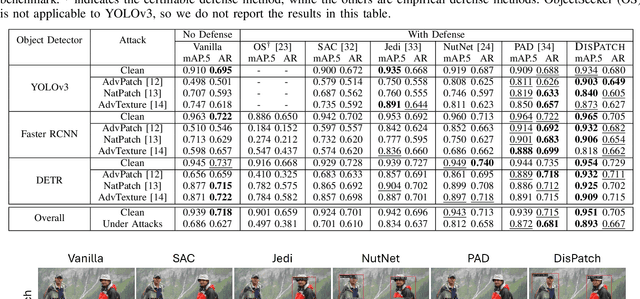
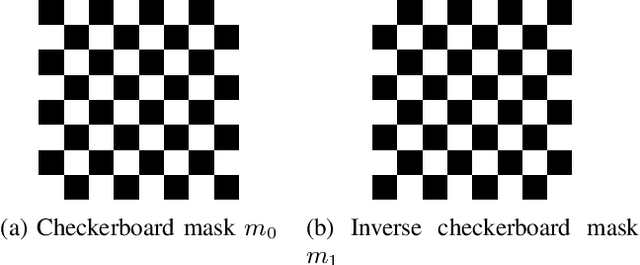

Abstract:Object detection is fundamental to various real-world applications, such as security monitoring and surveillance video analysis. Despite their advancements, state-of-theart object detectors are still vulnerable to adversarial patch attacks, which can be easily applied to real-world objects to either conceal actual items or create non-existent ones, leading to severe consequences. Given the current diversity of adversarial patch attacks and potential unknown threats, an ideal defense method should be effective, generalizable, and robust against adaptive attacks. In this work, we introduce DISPATCH, the first diffusion-based defense framework for object detection. Unlike previous works that aim to "detect and remove" adversarial patches, DISPATCH adopts a "regenerate and rectify" strategy, leveraging generative models to disarm attack effects while preserving the integrity of the input image. Specifically, we utilize the in-distribution generative power of diffusion models to regenerate the entire image, aligning it with benign data. A rectification process is then employed to identify and replace adversarial regions with their regenerated benign counterparts. DISPATCH is attack-agnostic and requires no prior knowledge of the existing patches. Extensive experiments across multiple detectors and attacks demonstrate that DISPATCH consistently outperforms state-of-the-art defenses on both hiding attacks and creating attacks, achieving the best overall mAP.5 score of 89.3% on hiding attacks, and lowering the attack success rate to 24.8% on untargeted creating attacks. Moreover, it maintains strong robustness against adaptive attacks, making it a practical and reliable defense for object detection systems.
Implicit Neural Representation for Video Restoration
Jun 05, 2025Abstract:High-resolution (HR) videos play a crucial role in many computer vision applications. Although existing video restoration (VR) methods can significantly enhance video quality by exploiting temporal information across video frames, they are typically trained for fixed upscaling factors and lack the flexibility to handle scales or degradations beyond their training distribution. In this paper, we introduce VR-INR, a novel video restoration approach based on Implicit Neural Representations (INRs) that is trained only on a single upscaling factor ($\times 4$) but generalizes effectively to arbitrary, unseen super-resolution scales at test time. Notably, VR-INR also performs zero-shot denoising on noisy input, despite never having seen noisy data during training. Our method employs a hierarchical spatial-temporal-texture encoding framework coupled with multi-resolution implicit hash encoding, enabling adaptive decoding of high-resolution and noise-suppressed frames from low-resolution inputs at any desired magnification. Experimental results show that VR-INR consistently maintains high-quality reconstructions at unseen scales and noise during training, significantly outperforming state-of-the-art approaches in sharpness, detail preservation, and denoising efficacy.
MiCRo: Mixture Modeling and Context-aware Routing for Personalized Preference Learning
May 30, 2025Abstract:Reward modeling is a key step in building safe foundation models when applying reinforcement learning from human feedback (RLHF) to align Large Language Models (LLMs). However, reward modeling based on the Bradley-Terry (BT) model assumes a global reward function, failing to capture the inherently diverse and heterogeneous human preferences. Hence, such oversimplification limits LLMs from supporting personalization and pluralistic alignment. Theoretically, we show that when human preferences follow a mixture distribution of diverse subgroups, a single BT model has an irreducible error. While existing solutions, such as multi-objective learning with fine-grained annotations, help address this issue, they are costly and constrained by predefined attributes, failing to fully capture the richness of human values. In this work, we introduce MiCRo, a two-stage framework that enhances personalized preference learning by leveraging large-scale binary preference datasets without requiring explicit fine-grained annotations. In the first stage, MiCRo introduces context-aware mixture modeling approach to capture diverse human preferences. In the second stage, MiCRo integrates an online routing strategy that dynamically adapts mixture weights based on specific context to resolve ambiguity, allowing for efficient and scalable preference adaptation with minimal additional supervision. Experiments on multiple preference datasets demonstrate that MiCRo effectively captures diverse human preferences and significantly improves downstream personalization.
AutoL2S: Auto Long-Short Reasoning for Efficient Large Language Models
May 28, 2025Abstract:The reasoning-capable large language models (LLMs) demonstrate strong performance on complex reasoning tasks but often suffer from overthinking, generating unnecessarily long chain-of-thought (CoT) reasoning paths for easy reasoning questions, thereby increasing inference cost and latency. Recent approaches attempt to address this challenge by manually deciding when to apply long or short reasoning. However, they lack the flexibility to adapt CoT length dynamically based on question complexity. In this paper, we propose Auto Long-Short Reasoning (AutoL2S), a dynamic and model-agnostic framework that enables LLMs to dynamically compress their generated reasoning path based on the complexity of the reasoning question. AutoL2S enables a learned paradigm, in which LLMs themselves can decide when longer reasoning is necessary and when shorter reasoning suffices, by training on data annotated with our proposed method, which includes both long and short CoT paths and a special <EASY> token. We then use <EASY> token to indicate when the model can skip generating lengthy CoT reasoning. This proposed annotation strategy can enhance the LLMs' ability to generate shorter CoT reasoning paths with improved quality after training. Extensive evaluation results show that AutoL2S reduces the length of reasoning generation by up to 57% without compromising performance, demonstrating the effectiveness of AutoL2S for scalable and efficient LLM reasoning.
MolLangBench: A Comprehensive Benchmark for Language-Prompted Molecular Structure Recognition, Editing, and Generation
May 21, 2025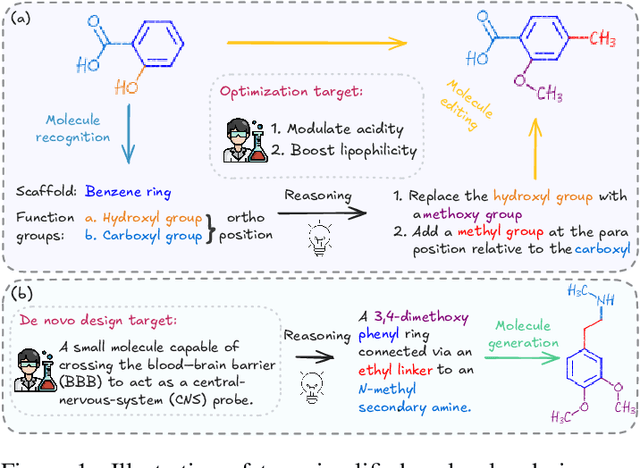
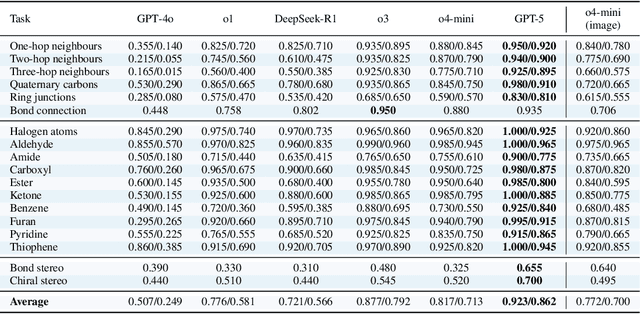
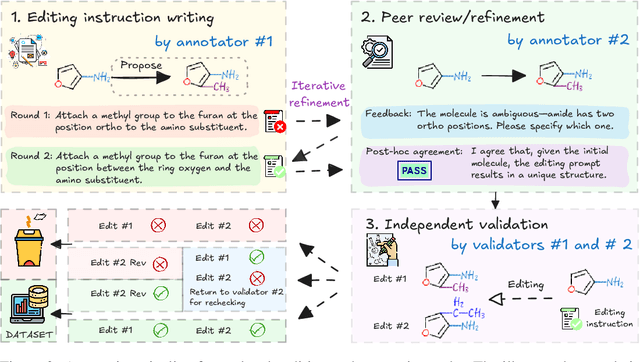

Abstract:Precise recognition, editing, and generation of molecules are essential prerequisites for both chemists and AI systems tackling various chemical tasks. We present MolLangBench, a comprehensive benchmark designed to evaluate fundamental molecule-language interface tasks: language-prompted molecular structure recognition, editing, and generation. To ensure high-quality, unambiguous, and deterministic outputs, we construct the recognition tasks using automated cheminformatics tools, and curate editing and generation tasks through rigorous expert annotation and validation. MolLangBench supports the evaluation of models that interface language with different molecular representations, including linear strings, molecular images, and molecular graphs. Evaluations of state-of-the-art models reveal significant limitations: the strongest model (o3) achieves $79.2\%$ and $78.5\%$ accuracy on recognition and editing tasks, which are intuitively simple for humans, and performs even worse on the generation task, reaching only $29.0\%$ accuracy. These results highlight the shortcomings of current AI systems in handling even preliminary molecular recognition and manipulation tasks. We hope MolLangBench will catalyze further research toward more effective and reliable AI systems for chemical applications.
Integration Flow Models
Apr 28, 2025Abstract:Ordinary differential equation (ODE) based generative models have emerged as a powerful approach for producing high-quality samples in many applications. However, the ODE-based methods either suffer the discretization error of numerical solvers of ODE, which restricts the quality of samples when only a few NFEs are used, or struggle with training instability. In this paper, we proposed Integration Flow, which directly learns the integral of ODE-based trajectory paths without solving the ODE functions. Moreover, Integration Flow explicitly incorporates the target state $\mathbf{x}_0$ as the anchor state in guiding the reverse-time dynamics. We have theoretically proven this can contribute to both stability and accuracy. To the best of our knowledge, Integration Flow is the first model with a unified structure to estimate ODE-based generative models and the first to show the exact straightness of 1-Rectified Flow without reflow. Through theoretical analysis and empirical evaluations, we show that Integration Flows achieve improved performance when it is applied to existing ODE-based models, such as diffusion models, Rectified Flows, and PFGM++. Specifically, Integration Flow achieves one-step generation on CIFAR10 with FIDs of 2.86 for the Variance Exploding (VE) diffusion model, 3.36 for rectified flow without reflow, and 2.91 for PFGM++; and on ImageNet with FIDs of 4.09 for VE diffusion model, 4.35 for rectified flow without reflow and 4.15 for PFGM++.
Implicit Neural Representation for Video and Image Super-Resolution
Mar 06, 2025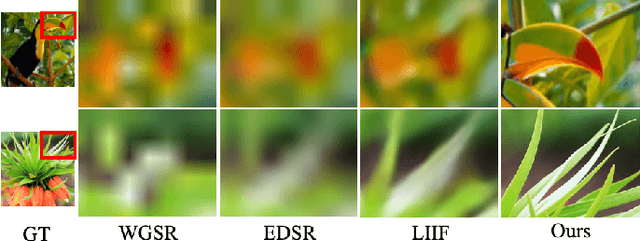
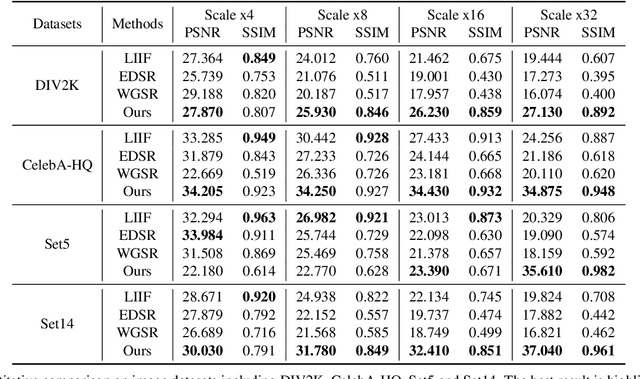
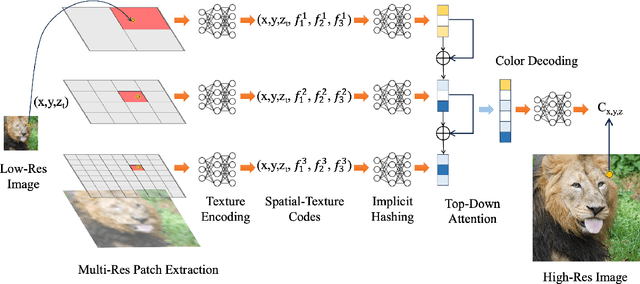
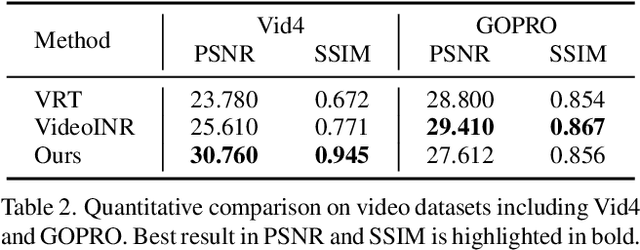
Abstract:We present a novel approach for super-resolution that utilizes implicit neural representation (INR) to effectively reconstruct and enhance low-resolution videos and images. By leveraging the capacity of neural networks to implicitly encode spatial and temporal features, our method facilitates high-resolution reconstruction using only low-resolution inputs and a 3D high-resolution grid. This results in an efficient solution for both image and video super-resolution. Our proposed method, SR-INR, maintains consistent details across frames and images, achieving impressive temporal stability without relying on the computationally intensive optical flow or motion estimation typically used in other video super-resolution techniques. The simplicity of our approach contrasts with the complexity of many existing methods, making it both effective and efficient. Experimental evaluations show that SR-INR delivers results on par with or superior to state-of-the-art super-resolution methods, while maintaining a more straightforward structure and reduced computational demands. These findings highlight the potential of implicit neural representations as a powerful tool for reconstructing high-quality, temporally consistent video and image signals from low-resolution data.
Rethinking Diverse Human Preference Learning through Principal Component Analysis
Feb 18, 2025Abstract:Understanding human preferences is crucial for improving foundation models and building personalized AI systems. However, preferences are inherently diverse and complex, making it difficult for traditional reward models to capture their full range. While fine-grained preference data can help, collecting it is expensive and hard to scale. In this paper, we introduce Decomposed Reward Models (DRMs), a novel approach that extracts diverse human preferences from binary comparisons without requiring fine-grained annotations. Our key insight is to represent human preferences as vectors and analyze them using Principal Component Analysis (PCA). By constructing a dataset of embedding differences between preferred and rejected responses, DRMs identify orthogonal basis vectors that capture distinct aspects of preference. These decomposed rewards can be flexibly combined to align with different user needs, offering an interpretable and scalable alternative to traditional reward models. We demonstrate that DRMs effectively extract meaningful preference dimensions (e.g., helpfulness, safety, humor) and adapt to new users without additional training. Our results highlight DRMs as a powerful framework for personalized and interpretable LLM alignment.
Latent Radiance Fields with 3D-aware 2D Representations
Feb 13, 2025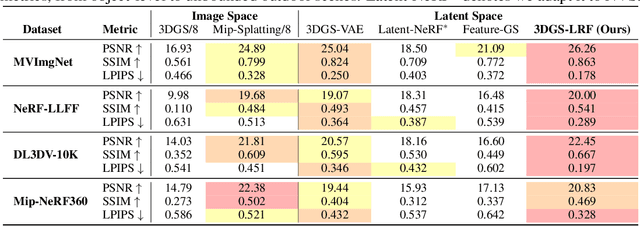



Abstract:Latent 3D reconstruction has shown great promise in empowering 3D semantic understanding and 3D generation by distilling 2D features into the 3D space. However, existing approaches struggle with the domain gap between 2D feature space and 3D representations, resulting in degraded rendering performance. To address this challenge, we propose a novel framework that integrates 3D awareness into the 2D latent space. The framework consists of three stages: (1) a correspondence-aware autoencoding method that enhances the 3D consistency of 2D latent representations, (2) a latent radiance field (LRF) that lifts these 3D-aware 2D representations into 3D space, and (3) a VAE-Radiance Field (VAE-RF) alignment strategy that improves image decoding from the rendered 2D representations. Extensive experiments demonstrate that our method outperforms the state-of-the-art latent 3D reconstruction approaches in terms of synthesis performance and cross-dataset generalizability across diverse indoor and outdoor scenes. To our knowledge, this is the first work showing the radiance field representations constructed from 2D latent representations can yield photorealistic 3D reconstruction performance.
 Add to Chrome
Add to Chrome Add to Firefox
Add to Firefox Add to Edge
Add to Edge